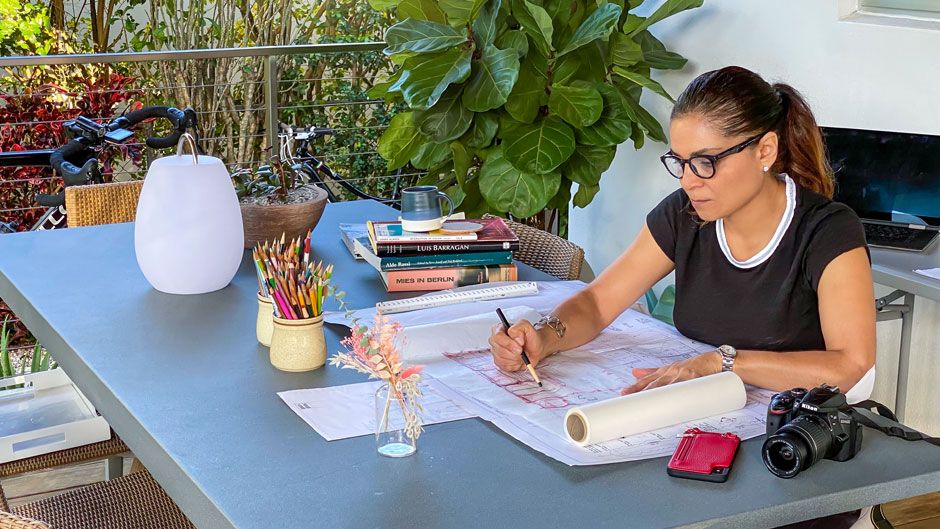The COVID-19 pandemic has taught many lessons. But one of the most striking involves the spaces where we live and work. For many, lockdowns and physical distancing has meant doing everything from home. Many adults are working at home, and children are being schooled at home.
This new reality has made many realize that their homes are not as ideal for these new tasks.
“Prior to COVID, the open space concept in domestic projects held a certain allure. Now, this strategy is even more attractive because of the flexibility it offers in reorganizing an interior and creating enclosed spaces,” said Carmen Guerrero, associate professor in practice at the School of Architecture
Guerrero, who has her own company, Carmen Guerrero Design Studio Inc., said many of her clients are asking for solutions on how to retrofit their existing spaces into areas that provide more privacy and prevent outside noise from seeping in, while still allowing them to be part of a larger experience.
Some opt to add an outside structure or room that can become an office, others divide the space with moveable walls that can be glazed or transparent so they can keep tabs on what is going on around them.
Some are converting their garages into workout rooms or offices by removing doors and integrating the areas into the larger home space.
The number of home improvement projects in the country has risen dramatically during the pandemic. The Home Improvement Research Institute predicted Americans spent $439.9 billion on home improvement products in 2020.

The increased demand for home remodeling was an unexpected outcome of the pandemic, impacting cost and availability of building products such as dimensional lumber, said Christopher Meyer, assistant professor in the School of Architecture who runs the Littoral Urbanism Lab.
“This rise in lumber prices can be linked to the pandemic as production mills closed for COVID-19 safety measures, while the projected demands for wood products were greatly underestimated,” he said.
“When you couple the reduced production of building products with the sharp increase in home remodeling projects, there will inevitably be a shortage of supply and a surge in demand,” Meyer added. “All of a sudden we have a significant number of people who are doing office work, teaching, and learning from home without productive space and reaching out to architectural offices for answers.”
Meyer, whose architectural practice, Atelier Mey, is working on projects in Miami and other parts of the United States, has had to examine multiple material strategies based on product availability and associated costs for projects.
The need to create various living spaces goes beyond the office and work-out rooms, according to the architectural experts.
What is one to do if a member of the family needs to be isolated because they have COVID-19?
Guerrero has clients who have asked her to create outside patios or exterior spaces that are linked to the bedrooms and the kitchen.
“This way the person who is quarantined can enjoy the outdoors and visit the kitchen without walking through other areas of the house,” she pointed out.
Homeowners wanting to socialize in a safe space have asked her to create an outside living room complete with technological amenities such as an audio/sound system and large-screen televisions or projectors.
“They can gather with family and friends and avoid being stuck indoors,” she said. “Being outside makes us feel safer.”

